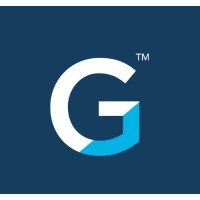Or listen in your favorite podcast app
Apple Podcasts / Google Podcasts / Stitcher
You hear it all the time, especially on this show — a kid who grew up loving technology makes his way into the IT field. That was the story for Karl Mosgofian, the CIO at Gainsight, but his path has led him on a road that has still been unexpected. The world of IT has changed so much since Karl first entered the field, and as a CIO, he’s learned that there are some things you have to constantly adjust to, and others that will always remain the same. He explains all of the intricacies of the role, as well as the exciting work being done at Gainsight, on this episode of IT Visionaries.
Best Advice: “I think as a first time CIO, you’ve probably got a lot of experience at a lot of different levels, but you may not have as much experience at say, working with the CFO or C-level executives. I would say don’t be afraid of them. Don’t be afraid to call a meeting, walk into their office and say, ‘Look, I just want to try and figure out how to make you more successful, how to be a strategic part of the business. Talk to me about what’s top of mind for you? What’s keeping you up at night? And how can I partner with you to help you be successful?’”
Key Takeaways
- Creating customer success has to be an ongoing process about creating overall value
- CIOs are playing a larger role in the overall business of their companies and they need to be able to work across teams and integrate in a collaborative way
- The role of IT ebbs and flows throughout time and we will continue to see CIOs playing key roles in the overall business
Working at Gainsight
As a kid, Karl admits that he was a computer nerd, and believes he found the perfect career working in IT. At Gainsight, Karl is the CIO and has numerous responsibilities that include everything from operations to security and privacy, as well as time working externally with customers. He notes that because Gainsight was born in the cloud, it looks different than many other tech companies — the team is more distributed and there is more of a connected cloud-based network to manage rather than the traditional tech stack and office maintenance. Karl calls it the federated model and it’s all about forming connections and collaborating in new and effective ways.
“Our people are spread out and we’re quite distributed, so it’s not so much having a big office with a ton of people and a big network to manage and more about how do I enable people to be effective wherever they are.”
Creating products and working with customers
Customer success is front of mind for Karl and Gainsight. Karl believes that creating an environment of customer success has to do more with maintaining a strong connection with customers all the time. It’s not simply about putting out fires. Instead, you have to be there for the customer throughout the entire time they use your product, not just when you want to sell them something. Karl says that more and more, customer success is a focus for early-stage start-ups and it is critical to their success moving forward. CIOs play a key role in creating those strong relationships with customers, and they also rely on strong relationships with other CIOs to share information and learn best practices.
“Anybody who wants to be customer-centric more and more is thinking about customer success which is a space that’s still somewhat new and not fully understood. I think when people hear the term they think about it in generic terms, as just meaning, ‘I really care a lot about my customers.’ It’s really more than that. It has to do with not just responding to issues that come up from a support perspective or going back to your customer and trying to sell them something on a regular basis. Let’s say you sell them a subscription and you need to come back in a few years and get them to renew. But how do you maintain a strong connection to them all the time and show that you care not just about putting out fires, so to speak in a customer support sense, but actually making sure that they’re getting the full value of what they bought from you?”
How CIOs are playing a bigger role
In recent years, CIOs and those in tech have been taking on much larger roles in terms of the overall business strategy of their companies. Karl explains that CIOs are becoming key in bringing forward opportunities to grow, innovate and separate themselves from the pack. CIOs need to work in collaboration with CEOs and the rest of the C-suite rather than being controlled by them or vice versa. This is especially hard for CIOs to get used to because traditionally they have had control of all the technology and access throughout the company, and today they have to be a bit more willing to allow other departments and teams to have free reign on certain applications or processes. CIOs need to direct the teams to work collaboratively or inform them of other projects or applications that already exist that could be used to solve problems faster. It’s about integration more than anything else.
Karl also says that in order to create an environment that sparks innovation, you as the CIO need to always be aware of what is going on in your industry and encourage others to explore as well. You have to get together with people, form a network and share ideas so that you can push your boundaries. And if you don’t have a network, you can and should create one.
“I think most CIOs are expected to be someone who’s bringing new technologies and new opportunities to the business.”
“The danger of individual groups going off and doing work that’s optimized for their space is that it doesn’t necessarily all hang together or fit into a framework that makes sense for the company as a whole. So because I have this very collaborative relationship with everyone and I’m providing these integration services, I can see everything that’s going on. I don’t necessarily directly control all of it, but I see it and I have the opportunity to step in and say, ‘Hey, you might want to go a different direction here or you’re off trying to solve this problem, but actually we already have something that does that, that you just don’t know about because it’s in a different department.’”
“Instead of being an order taker and having a transactional relationship and just doing something for you and then going away and not talking to you until you need something, we’re going to have more of an ongoing relationship. We’re going to have something like a quarterly meeting where we review all the things that we’re doing. What are your priorities? How have they changed? What can we do to make sure we’re aligned on those?”
The future of IT
The technology and IT industries have grown and changed rapidly in recent years, and Karl believes that change will continue. For example, he thinks that IT and those in the field will become more strategic. However, there are certain things that will remain consistent. CIOs will remain focused on the business and they will continue to try to automate and make more efficient as many processes and applications as possible.
“I think there’s always ebbs and flows and we see centralized and decentralized models going back and forth over time. I think right now we’re in a moment that’s very decentralized, but I think IT will always be the core of keeping things running in an organization. And I actually will not be surprised to see the wheels turn again and see more and more IT come back to IT as people understand the real impacts of trying to keep all these things running over time.”
—
After the interview, be sure to tune in to the Trailblazer Tuesday segment featuring Rishi Shah, a Sr. Business Process Architect at Seatgate Technology.




